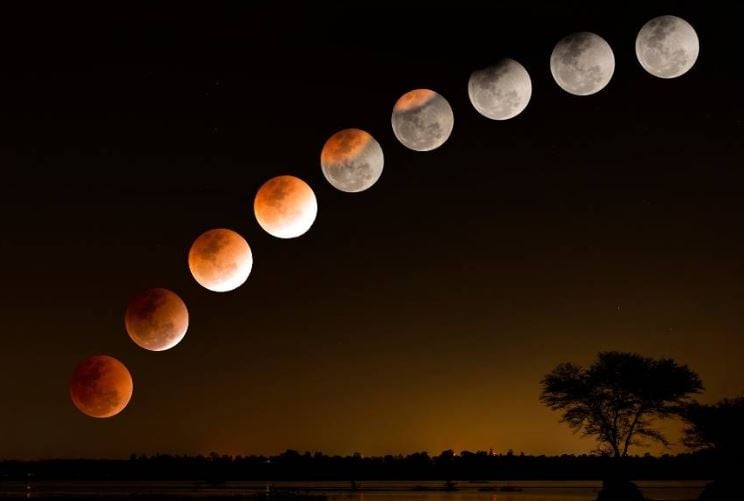When the moon, earth and sun are in line
Both solar and lunar eclipses result from the same phenomenon: three celestial bodies – the sun, the earth, and the moon – aligning on an imaginary line in space. However, the arrangement of the positions of these three bodies creates two very different phenomena.
Solar eclipse – when the moon covers the sun
A solar eclipse occurs when the moon passes between the earth and the sun, blocking the sun's light before it reaches the earth. At this time, observers from some areas on earth will see the sun partially or completely obscured, creating a strange scene in the middle of the day.

Illustration photo.
Depending on the distance and position of the moon, solar eclipses are divided into three types: total eclipse (the sun is completely covered), partial eclipse (partially covered), and annular eclipse (the moon is smaller than the sun, forming a ring-like rim of light).
Lunar Eclipse – When Darkness Swallows the Moon
Unlike a solar eclipse, a lunar eclipse occurs when the Earth passes between the sun and the moon. The Earth's shadow falls on the moon, causing it to appear darker or turn orange-red. This can only happen during a full moon.
Lunar eclipses also come in three main types: total lunar eclipses, partial lunar eclipses, and penumbral lunar eclipses – when the moon only passes into the Earth's penumbral shadow.
Why doesn't this happen every month?
Many people wonder why new moons and full moons occur every month, but not every month has a solar or lunar eclipse. The answer lies in the fact that the moon’s orbit is tilted about 5 degrees relative to the plane of the Earth’s orbit. This causes the moon to be positioned above or below the plane in which the Earth orbits the sun most of the time.
Only when the moon crosses the intersection of the two orbits – called the two nodes – and at the right time of a new moon or full moon, can a solar or lunar eclipse occur.
Light and darkness – a poetic encounter
Both solar and lunar eclipses are not only astronomical phenomena, but also deeply aesthetic. From darkening the sky in the middle of the day to the mysterious “blood moon,” these two phenomena remind us of the wonder and complexity of the universe.
Every time they happen, they are a precious opportunity for people to observe, research, and feel their smallness in the vast, mysterious space.
Source: https://doanhnghiepvn.vn/cong-nghe/tai-sao-lai-co-hien-tuong-nhat-thuc-va-nguyet-thuc/20250417111617175


![[Photo] General Secretary To Lam concludes visit to Russia, departs for Belarus](https://vphoto.vietnam.vn/thumb/1200x675/vietnam/resource/IMAGE/2025/5/11/0acf1081a95e4b1d9886c67fdafd95ed)


![[Photo] General Secretary To Lam arrives in Minsk, begins state visit to Belarus](https://vphoto.vietnam.vn/thumb/1200x675/vietnam/resource/IMAGE/2025/5/11/76602f587468437f8b5b7104495f444d)
![[Photo] General Secretary To Lam meets and expresses gratitude to Vietnam's Belarusian friends](https://vphoto.vietnam.vn/thumb/1200x675/vietnam/resource/IMAGE/2025/5/11/c515ee2054c54a87aa8a7cb520f2fa6e)

















![[Photo] National Assembly Chairman Tran Thanh Man attends the Party Congress of the Committee for Culture and Social Affairs](https://vphoto.vietnam.vn/thumb/1200x675/vietnam/resource/IMAGE/2025/5/11/f5ed02beb9404bca998a08b34ef255a6)

































































Comment (0)